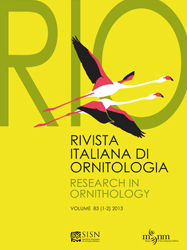First cases of unsuccessful breeding of the Mediterranean shag Gulosus aristotelis desmarestii in the Italian northern Adriatic (Friuli-Venezia Giulia region, northeastern Italy)
All claims expressed in this article are solely those of the authors and do not necessarily represent those of their affiliated organizations, or those of the publisher, the editors and the reviewers. Any product that may be evaluated in this article or claim that may be made by its manufacturer is not guaranteed or endorsed by the publisher.
Authors
This short note documents the first two recorded nesting events of the Mediterranean shag (Gulosus aristotelis desmarestii) in the Italian northern Adriatic, specifically within the Duino Cliffs Regional Nature Reserve (Duino-Aurisina municipality, province of Trieste, Friuli-Venezia Giulia region, Italy). One case involved egg-laying, while the other was limited to nest building; both attempts ultimately failed. It is hypothesized that these unusually late breeding attempts, which occurred between late April and May 2024, beyond the species’ typical breeding period (i.e., December to early May), may represent re-nesting efforts following failures at the Croatian colony, where most of the Adriatic population breeds. These observations are particularly significant, as they mark the first confirmed nesting of the species in the Italian Adriatic north of the Tremiti Islands (Puglia), located approximately 450 km to the south, and represent the northernmost known nesting site in the Mediterranean Sea. The nearest known breeding colony, however, lies 70 km away in Croatia (Regata Island, municipality of Poreč, Istria). The Mediterranean shag, an endemic subspecies protected under EU legislation and considered a valuable bioindicator of marine ecosystem health, has experienced a marked decline in the non-breeding population across the Adriatic in recent years, particularly in the Gulf of Trieste. These findings therefore carry notable conservation value, underscoring the need for regular monitoring and targeted protection measures.
How to Cite

This work is licensed under a Creative Commons Attribution-NonCommercial 4.0 International License.







